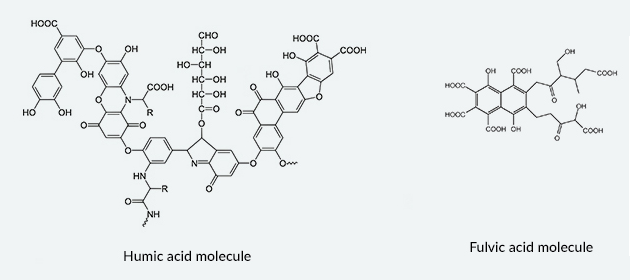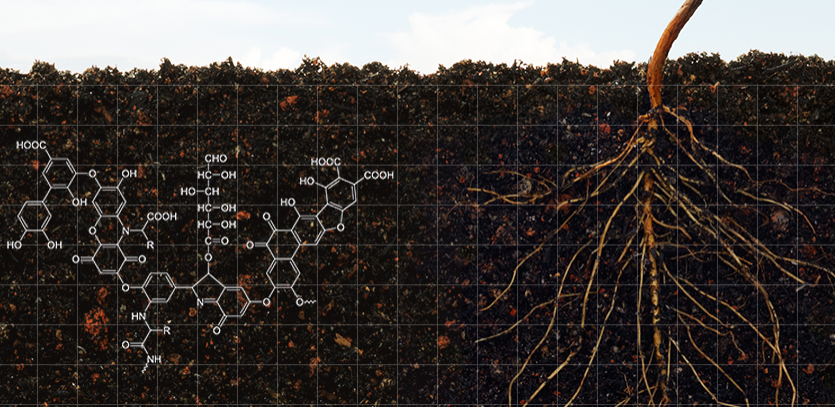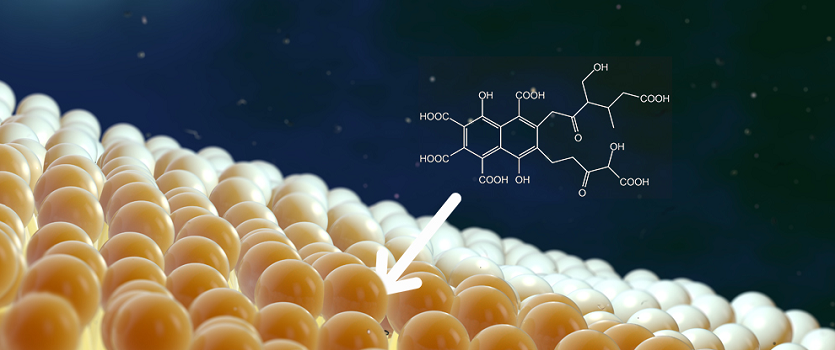
Exhibition time: 17-19 March, 2026 Shanghai, China
 中文
中文

Exhibition time: 17-19 March, 2026 Shanghai, China
 中文
中文

A Quick Overview
Humic and fulvic acids are both humic substances (along with humin). However, there are a few key differences that impact their benefits and how each are best applied. In short, they vary regarding carbon and oxygen content, acidity, degree of polymerization, molecular weight, and color. Humic acids are large molecules that function best in soil to provide an optimal growing environment. Fulvic acids are much smaller molecules that work well in both soil and foliar applications, where they transfer vital nutrients through the cell membrane of plants. They work in tandem to help boost plant help and increase crop yields.
More about Humic Acids
Humic acids are big molecules, ranging in molecular size from 10,000 to 100,000. They're dark in color and combine mixtures of carbon chains and carbon rings. (In addition to carbon, they also contain oxygen, nitrogen, hydrogen, and phosphorus.) The exact composition of humic molecules varies by source. They're not soluble in water in acid conditions, but are soluble in alkaline solutions. Humic acids work best in the soil, where they readily unlock nutrients and bind to them, making them available for uptake into plants. And they chelate toxic metals, preventing harmful material from entering the plant. Further, they stimulate microbial activity in soil, increase water retention, and stimulate root and shoot growth. They also act as a dilator, increasing the cell wall permeability of plants so that nutrients can be absorbed. They're all-stars of soil, an essential component of every soil environment that help to make the whole system work better. Humic acids can be thought of as the roads, bridges, and tunnels that allow for essential exchanges between the plant and soil. (Although humic acids work best in soil, they're also vital in foliar applications, because they increase the cell wall permeability of plants, which in turn increases the uptake of nutrients.)

Humic acids help to create a healthy soil environment by improving soil structure and function. This in turn leads to better microbial activity, better water retention, and the more effective transfer of nutrients to the plant
More about Fulvic Acids
Fulvic acids are much smaller molecules than humic acids, ranging in molecular size from 1,000 to 10,000. They're soluble in water at all pH levels, unlike humic acids, which are only soluble in alkaline solutions. There are two types of fulvic acids–fulvates, which are molecules bound to minerals, and free-form fulvic acids. Fulvic acids consist mostly of carbon, hydrogen, oxygen, and nitrogen. Like humic acids, they're formed through microbial decay. They are golden in color and are more biologically active than humic acids, due to an oxygen content that is nearly twice that of humic acids. The principal benefit of fulvic acids is their ability to bind to nutrients and transfer those nutrients into plants. In fact, fulvic acids are the most effective carbon containing chelating compound known. This is due to fulvic acids small molecular size and electrical charge. (Although they're small, they can carry many times their own weight in minerals.)

Fulvic acids are small enough to pass through cell membranes,
carrying with them valuable micronutrients into the plant.
Which do I need?
Humic and fulvic acids are both essential for healthy plants. Using one without the other short-changes the full spectrum of benefits that the two acids provide. Further, they work in tandem to optimize growing conditions. For instance, humic acids increase the permeability of cell walls, making it easier for fulvic acids to carry nutrients into the plant. And while fulvic acids are the carrier for nutrients, humic acids make those nutrients more readily available in the soil. They also work in tandem to increase water holding capacity and stimulate root and shoot growth. Nature intended the two to work together, and we certainly recommend that same approach, whether you're applying via a soil or foliar method.
The science on humic and fulvic acids is constantly evolving, and testing methods are becoming better each year. Until recently, the two acids were lumped together and not tested separately. While we're increasingly able to differentiate the functions of each acids, there is significant crossover between the two, and it's impossible to fully differentiate them. Therefore, we believe it would be imprudent for any company to only recommend one of the acids.
What about humin?
Humic substances consist of three subcategories–humic acids, fulvic acids, and humin. Humins are the fraction of the humic substances which are not soluble at any pH. Humin complexes are considered macro-organic (very large) substances because of their molecular weights. They consist mostly of aliphatic hydrocarbon functionalities and some carbohydrates. These substances do function to improve the soils water holding capacity, structure, and to increase the cation exchange capacity (CEC) of the soil. However, their insolubility can make them difficult to work with, and they take a long time to break down in soils–sometimes decades. So while further research is needed, we don't currently consider humin do be as vital to plant health as humic and fulvic acids, and they can create difficulties when not removed from soluble mixes.
From EARTHGREEN PRODUCTS
